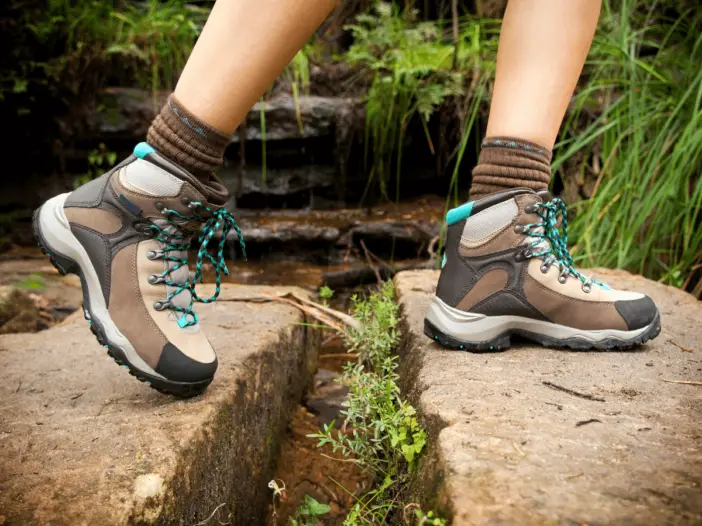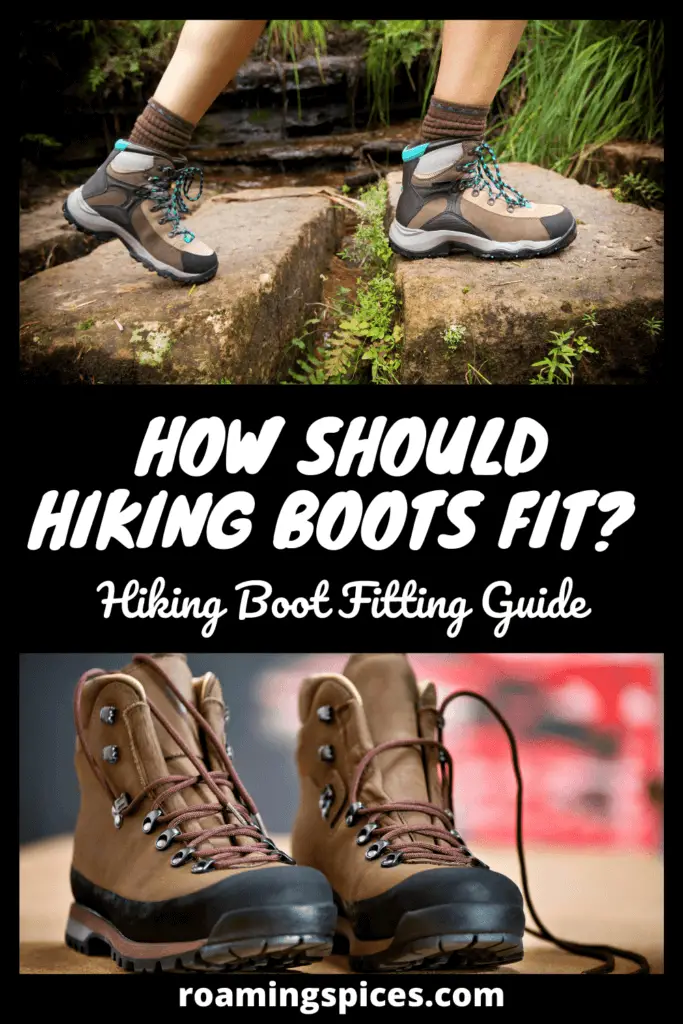
Hiking Basics
How should hiking boots fit is a key question that can be the difference between a comfortable and pleasurable hike or a painful and miserable one. Our hiking boot fitting guide should give you all the tips you require to maintain your foot health and therefore more enjoyable days on the trail
Knowing How to Size Hiking Boots
No gear is as essential for a hiker as a proper pair of hiking boots. This is not an overstatement by any means. Forget about hiking poles or backpacks—well, not really, those are important, too!—but the fact of the matter is that good hiking footwear can make or break your hiking experience. So, in this guide, we’ll take a look at how should hiking boots fit, and walk (pun absolutely intended) you through the hiking boot fitting process.
How Should Hiking Boots Fit: Hiking Boot Fitting Guide
One of the worst common things that can happen to you while hiking is getting blisters. Although typically rather small, these painful sores can transform an enjoyable hike into absolute hell, often within mere minutes.
Luckily, there is an easy solution to the blister problem. Get well-fitting hiking boots and take time to properly break them in. A good pair of boots, or hiking shoes if you prefer low-cut footwear, make a hiking outing much more pleasant, even allowing you to hike further and faster, without getting sore.
So, let’s find out how to fit hiking boots, shall we? Let’s start with step one: sizing hiking boots.
1. Sizing Hiking Boots
To find the best-fitting hiking boots, you’ll need to know how to size hiking boots. To do this, you’ll need the measurements of your feet. You can do this yourself at home, but a professional at an outdoor gear store may be more experienced and skilled at this. Either way, the measurements you’re looking for are the length, width and arch length of each foot.
Another useful measurement is the volume of your feet, which probably must be calculated by a store specialist. With those measurements, you and the person at the store can figure out the ideal boot size for you.
If you don’t have your foot measurements, the most common advice is to get hiking boots that are a size bigger than your regular shoes. This is a good idea for many reasons, from the fact you’ll probably be wearing thicker hiking socks to the possibility of your feet swelling while hiking.
Once you know your hiking boot size, you can actually start looking for boots—and try them on!
2. Fitting Hiking Boots
It is critical to try on all potential new hiking boots yourself. Never order hiking boots online without testing them out in real life. The only way to find the absolute best hiking boot fit for you is by walking around in them.
Visit your favorite outdoor gear store and try out several boots. There’s more to the hiking boot fitting process than simply putting on and taking off a bunch of boots, though. You need to keep a number of things in mind, even prepare a little bit beforehand. A bit more effort while searching and purchasing new hiking boots will pay off tenfold in the future.
- Wear the socks you intend to wear while hiking with your new boots. Remember that synthetic socks are better than cotton socks, which tend to cause more blisters. Make sure your socks are on properly, without any wrinkles or folds.
- Bring any insoles or orthotics you may use with you and put them in your prospective hiking boots.
- Wait until the end of the day to try on new hiking boots. Your feet are literally a bit bigger later in the day—they swell slightly as you go about your daily business—which mimics what they’ll do when you’re actually hiking.
- Completely unlace the boots, put your feet in the boots and tighten the laces from the bottom up.
- Don’t just put them on and take them off right away, walk around in the boots. Walk around the store for at least 15 minutes, take stairs up and down if possible.
- Pay attention to how they feel when walking. Your feet should be locked comfortably in position the entire time. If they slide around, that’ll most certainly result in blisters later on.
- Stand on your toes and heels. Is there any heel lift? Up to half an inch is considered acceptable.
- Your toes should not touch the front of the boots when walking downhill or downstairs. There should be plenty of wiggle room for your toes. You can also test this by kicking the boot toe first straight down into the floor. Again, your toes shouldn’t touch the front.
- Hiking boot fitting has two rules of thumb, quite literally. These are two useful ways how to tell if hiking boots are too big or too small.
- How much toe room should there be in hiking boots? There should be a thumb width of space between your longest toe and the tip of the boot.
- How snug should the heel be in hiking boots? You should be able to slide one finger between your heel and the back of the boot, but not two fingers
- The hiking boots must be comfortable right away! Anything that bothers or even hurts you from the start will be a nightmare after five miles of hiking.
3. Breaking In Hiking Boots
Once you know how should hiking boots fit and you’ve picked your ideal pair, the third essential step in the hiking boot fitting process is breaking them in. Often overlooked by eager hikers looking to use their brand-new gear right away, breaking in hiking boots can really save you some serious trouble down the road.
Even if you’ve found the most perfectly fitting pair, your boots will still need to sync up with your feet. Both the boots and your feet will have to get used to each other. Here are some ways to easily break in new hiking boots:
- Wear them while grocery shopping or on your commute to work.
- Wear them for a couple of hours a day around the house for a week.
- Wear them on a nearby hiking trail, which is arguably the best place to break in hiking boots.
When breaking in your boots, pay attention to points of discomfort or friction. This can happen even after vigilantly sizing and fitting hiking boots beforehand. Address those issues immediately, try lacing them up differently, or get in-soles.
If the discomfort continues, you may have to return the boots and find a new pair. As inconvenient as that may be, going through the hiking boot fitting process again is nothing compared with wearing poorly fitting boots, getting blisters, and even injuries.
And on top of that, you now know how should hiking boots fit and how to find them!
Hiking Boot Fitting Process: Conclusion
All in all, it’s not overly difficult or complicated to fit hiking boots. As with so much other hiking gear, from backpacks to socks, it’s simply a matter of knowing what to look and watch out for. Hopefully, this guide about fitting hiking boots has helped you on your way to the perfect pair of hiking footwear.
Like Our Article? Please Pin it!


Leave a Reply